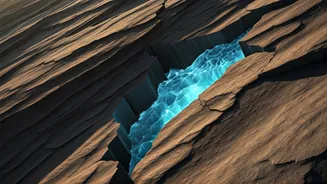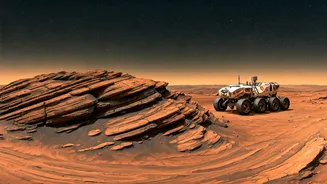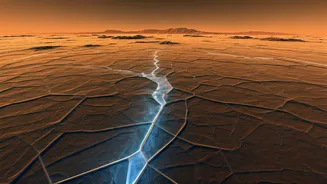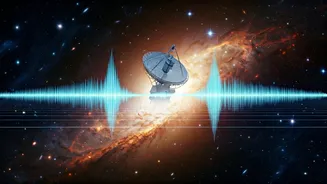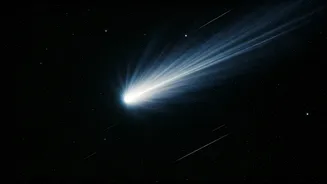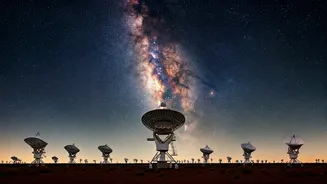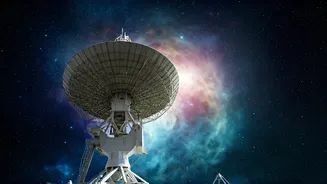Asteroid Water Insights
Scientists have uncovered significant evidence suggesting that water flowed on an asteroid for an astounding one billion years. This remarkable discovery
emerged from analyzing samples retrieved from the Ryugu asteroid. These samples offered a rare opportunity to study a celestial body's composition, indicating extensive water interaction over a long period. This long-term exposure hints at the possibility of complex geological processes and conditions that could have supported chemical reactions related to the building blocks of life. Studying these samples gives us valuable information about how water may have been distributed across other celestial bodies. The findings offer new perspectives on the formation of our solar system and the environments in which life could have evolved.
Heavy Water’s Presence
Astronomers have successfully detected heavy water within the planet-forming disk that circles a young star. The detection of heavy water, which contains deuterium instead of hydrogen, provides scientists with vital clues about the origins of water in our solar system and beyond. Studying the abundance of heavy water in such environments enables them to trace the journey of water molecules through space. It also sheds light on how water, a crucial component for life, might have been delivered to nascent planets. This discovery adds to the growing body of evidence supporting the idea that water is not only widespread in the universe but also present in the environments where planets form, providing a fundamental element for the development of life as we know it.
Early Universe Mapping
Scientists have created the most detailed radio map of the early universe using the Murchison Widefield Array (MWA). This project enables astronomers to observe the faint signals from the universe's formative period, shortly after the Big Bang. This provides a glimpse into the distribution of hydrogen during the first moments of cosmic evolution. By analyzing the radio waves emitted from this period, scientists can study the large-scale structure of the universe, providing insights into how galaxies and other structures formed. This intricate mapping facilitates a better understanding of the universe's expansion, the role of dark matter and dark energy, and the distribution of the earliest stars and galaxies. The MWA's contribution helps to unveil the complex history of the cosmos.
Martian Ice Preservation
NASA conducted an experiment demonstrating that Martian ice could potentially preserve signs of ancient life. This investigation involved simulating the conditions present on Mars, including the presence of ice. The findings suggest that Martian ice may have the capacity to protect potential microbial life or the traces of extinct organisms. The possibility of preserving biosignatures makes ice a prime target for future exploration. It can protect sensitive organic molecules from radiation. If signs of past life are discovered, it can give scientists a better understanding of whether life ever existed on Mars and provide insights into the planet’s geological past. This research emphasizes the importance of analyzing Martian ice in future missions.
Comet SWAN’s Flyby
Comet SWAN brightened, potentially becoming visible with binoculars, and passed close to Earth. Comet SWAN offered a rare opportunity for skywatchers to witness the celestial object. The comet's trajectory brought it relatively close, allowing amateur astronomers to observe its movement. The phenomenon created excitement among enthusiasts, offering chances to observe and photograph a comet. Such events are infrequent, making Comet SWAN a focal point for stargazers. Observation details, including the best times and locations for viewing, are readily available online, allowing enthusiasts to plan accordingly. The appearance of Comet SWAN offers a valuable opportunity to connect with the night sky and learn more about comets.
